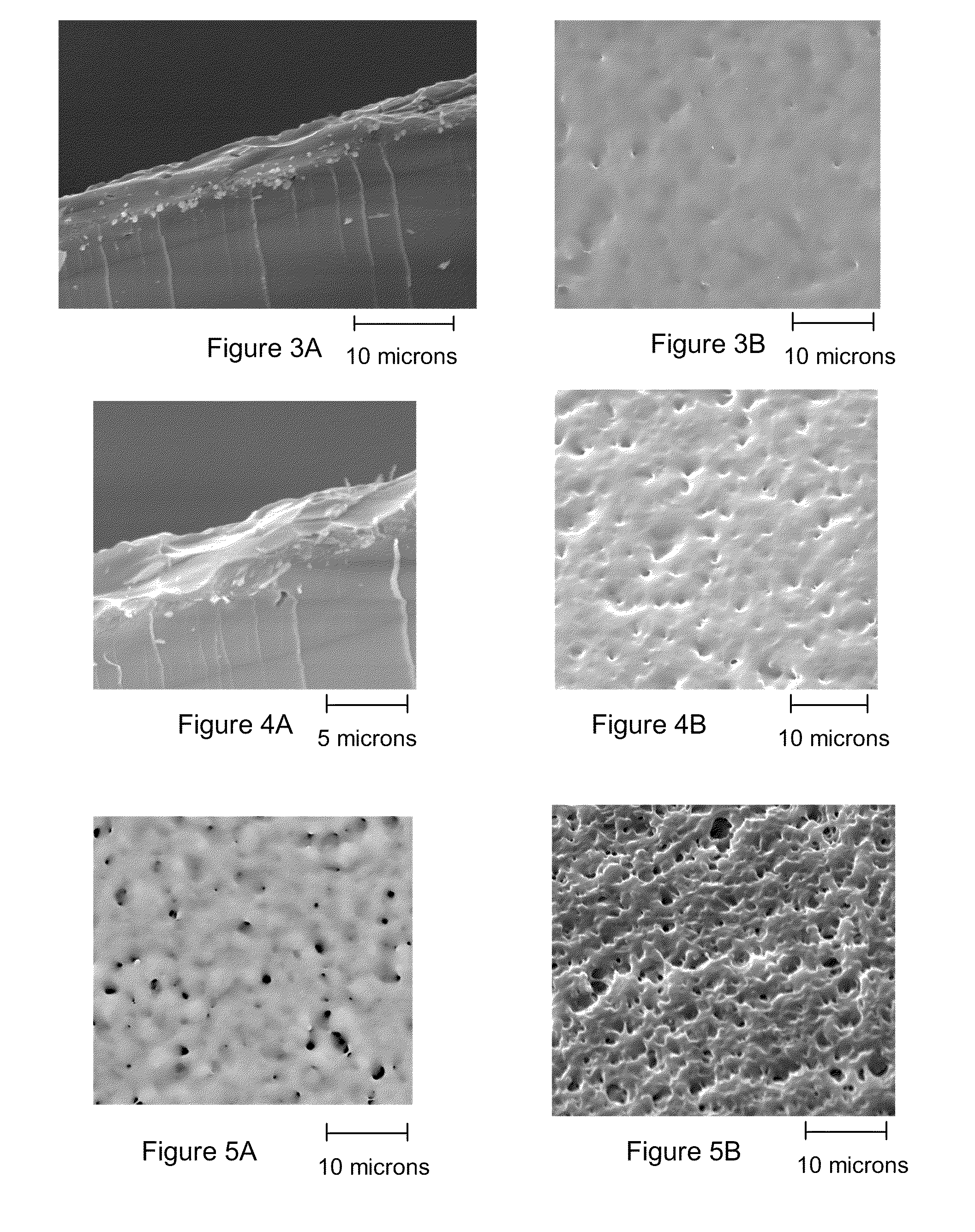Light scattering inorganic substrates by soot deposition
a technology of inorganic substrates and light scattering, which is applied in the direction of sustainable manufacturing/processing, instruments, and final product manufacturing, etc., can solve the problems of degrading the overall performance of the solar cell, degrading the quality of the deposited silicon, and limited texture optimization, so as to achieve smooth variation, less likely to create electrical problems, and high absorption
- Summary
- Abstract
- Description
- Claims
- Application Information
AI Technical Summary
Benefits of technology
Problems solved by technology
Method used
Image
Examples
examples
[0058]The above described method was demonstrated using B-doped SiO2 deposited by a pyrogenic process with a burner as is used for depositing soot for the fabrication of optical fibers by outside-vapor deposition (OVD). The required sintering temperature is a sensitive function of the B dopant concentration in the glass. BCl3 was used as the precursor gas for B2O3. Two B2O3 concentrations were investigated. Based upon microprobe measurements, the maximum B2O3 concentration on the samples was 10.5 weight percent (wt %) and 22 wt %. To sinter the samples, the following furnace schedule was used:
[0059]1. The furnace was ramped to the target temperature at 10° C. / hour.
[0060]2. The furnace was held at the target temperature for 1 hour.
[0061]3. The furnace was ramped down at a rate of 10° C. / hour (actually decrease is slower since the furnace does not cool this quickly)
[0062]For the 10.5 wt % samples, nearly complete sintering was achieved at temperatures above 950° C. on quartz substrate...
PUM
| Property | Measurement | Unit |
|---|---|---|
| thickness | aaaaa | aaaaa |
| thickness | aaaaa | aaaaa |
| angle | aaaaa | aaaaa |
Abstract
Description
Claims
Application Information
 Login to View More
Login to View More - R&D
- Intellectual Property
- Life Sciences
- Materials
- Tech Scout
- Unparalleled Data Quality
- Higher Quality Content
- 60% Fewer Hallucinations
Browse by: Latest US Patents, China's latest patents, Technical Efficacy Thesaurus, Application Domain, Technology Topic, Popular Technical Reports.
© 2025 PatSnap. All rights reserved.Legal|Privacy policy|Modern Slavery Act Transparency Statement|Sitemap|About US| Contact US: help@patsnap.com



